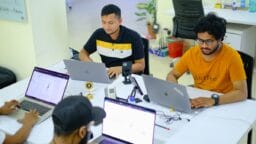Novel Software Tool Enhances Access to Spacecraft Camera Designs
by Sophie Jenkins
London, UK (SPX) Sep 22, 2025
A groundbreaking open-source software tool, dubbed SIMply, is set to democratise the realm of advanced spacecraft camera modelling, enabling a broader swath of the research community to engage with its capabilities.
The software adeptly simulates the interaction of light with various lenses, sensors, and surfaces, thus forecasting the performance of imaging systems in the space environment prior to their construction.
Developed by Dr George Brydon from the University of Glasgow, SIMply is available for complimentary download via GitHub. Utilising sophisticated ray-tracing and physical modelling techniques, the software can emulate a diverse range of elements from sensor noise to the intricacies of lens projections, covering pinhole, fisheye, and panoramic systems.
Its mission is to equip universities, small enterprises, and independent researchers with tools that were previously the exclusive domain of large corporations.
To substantiate the efficacy of SIMply, Dr Brydon conducted a comparative analysis between simulated visuals and actual spacecraft images of the Moon, the asteroid Itokawa, and comet 67P/Churyumov-Gerasimenko.
Leveraging detailed three-dimensional data from historical missions, he demonstrated the software’s remarkable ability to produce imagery nearly indistinguishable from the originals, accurately replicating brightness, surface reflectivity, and topographical nuances.
A standout test involved recreating an image from the 2007 Rosetta mission, wherein SIMply successfully captured the intricate interplay of surface features and camera sensor responses with exceptional fidelity.
Dr Brydon pointed out that such simulations can considerably diminish costs by mitigating the necessity for early-stage hardware development.
“The preliminary phases of SIMply’s creation coincided with my PhD journey, during which I recognised the glaring absence of accessible tools for modelling innovative spacecraft cameras,” he recounted.
“While large corporations possess a wealth of advanced resources for camera development, the software they generate remains proprietary, effectively excluding other researchers.”
He further articulated, My ambition in fully developing SIMply using the Python programming language was to forge a universally accessible tool for the planetary science and spacecraft design community.

It is freely available for everyone, spanning from university scholars to engineers at small to medium-sized enterprises, fostering innovation among those who might lack the resources for comprehensive software modelling.
Though the initial research pivots on planetary imaging, Dr Brydon envisions versatile applications extending well beyond the domain of space exploration.
He posits that SIMply could catalyse advancements in camera development for autonomous vehicles, sports analytics, and computer vision research.
Ongoing enhancements are aimed at incorporating new camera models, expanding functionalities, and refining documentation to facilitate user adoption. Current initiatives at Glasgow intertwine planetary geology with camera modelling, pioneering innovative imaging methodologies for surface science.
Source link: Spacewar.com.






